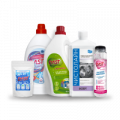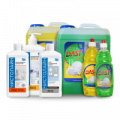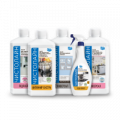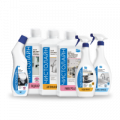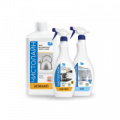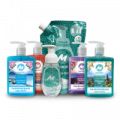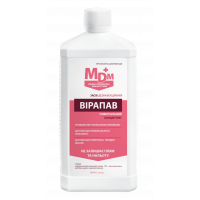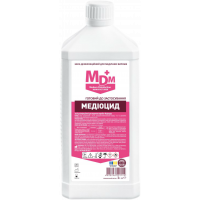Disinfecting furniture at home: how and with what to treat upholstered furniture?
Cleanliness and hygiene in the home directly affect the health of the family. Various furniture pieces are real "magnets" for dust, germs, and allergens. Therefore, disinfecting furniture is an important part of home care. It is essential, especially if there are children, allergy sufferers, or pets in the family. Let's take a look at how furniture disinfection can be carried out at home using accessible and safe products.
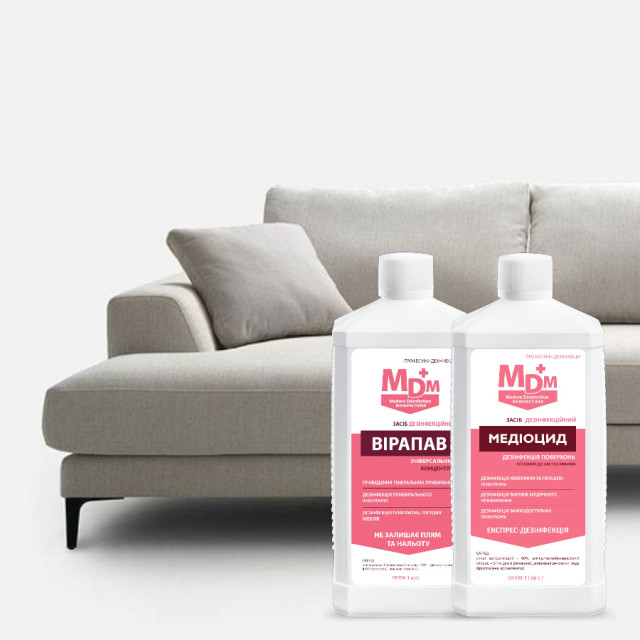
Content
WHY IS FURNITURE DISINFECTION NECESSARY?
Furniture comes into contact with the skin, absorbs sweat and oil, and also becomes a breeding ground for bacteria, dust mites, and mold. These contaminants are not always visible to the naked eye but can lead to:
- Allergies
- Skin diseases
- Breathing problems
It is especially important to disinfect old furniture, which accumulates a large amount of dirt over years of use. Disinfection may also be necessary if potentially harmful microorganisms, such as those from blood, saliva, or other bodily fluids, have come into contact with the surface.
MAIN METHODS OF FURNITURE DISINFECTION
Furniture disinfection at home can be carried out using various methods. Among them:
-
Steam treatment. Steam generators are an effective tool for disinfection. Hot steam penetrates deep into fabric fibers, killing up to 99% of bacteria, fungi, and dust mites. Steam is suitable for most upholstery types, but it is not recommended for fabrics sensitive to moisture. However, not every family can afford to buy or rent such equipment.
-
Specialized disinfectants. There are various aerosols, liquids, and foams that can be used for home furniture disinfection. Before use, it's important to ensure that the product is suitable for your upholstery and does not leave stains. You can test it by applying a small amount to an inconspicuous area, such as the backrest or underside.
-
Dry cleaning and vacuuming. Using vacuum cleaners with a turbo brush helps remove dust and allergenic particles, but complete disinfection of furniture can only be achieved with specialized chemical products or steam.
-
Ultraviolet (UV) treatment. Modern UV lamps destroy bacteria and viruses without the use of chemicals. This is a great option for disinfecting children's furniture, as the method is safe and leaves no chemical residues. However, it shares the same drawbacks as steam generators—purchasing or renting such equipment may not be affordable for everyone.
Experts advise against using questionable homemade mixtures for furniture treatment. Using DIY solutions can leave the furniture damp, increase the risk of unpleasant odors, or even mold. It's better to opt for more reliable options.
WHAT DISINFECTANTS CAN BE USED FOR FURNITURE TREATMENT AT HOME?
Specialized disinfectants work well for these tasks, such as:
-
Virapav. It has a broad spectrum of antimicrobial, antiviral, and antifungal activity. It is easy to use and works quickly. A major advantage is that it leaves no stains, streaks, or other marks on surfaces.
-
Mediocid. A disinfectant based on isopropyl alcohol and quaternary ammonium compounds. It quickly destroys viruses, fungi, and bacteria and dries quickly and without leaving a trace. The product is incredibly easy to use—simply spray it on surfaces. The included fragrance helps eliminate unpleasant odors.
HOW TO DISINFECT FURNITURE AT HOME?
Furniture disinfection should be carried out step by step. Follow this algorithm:
-
Preparation. Remove visible dirt using a vacuum cleaner. Check the material: some surfaces require careful handling.
-
Choosing the treatment method. Steam or chemical agents are suitable for most cases. UV lamps or alcohol-based solutions are effective for quick disinfection of small areas. The use of specialized liquid disinfectants that take time to dry is possible if the furniture has enough time to dry, such as near heating devices or in warmer conditions (summer), etc.
-
Treatment. Apply the disinfecting solution evenly to the surface. Leave the product on for the time indicated in the instructions or let the steam take effect. Don't forget to treat pillows, covers, and hard-to-reach areas.
-
Final Step. Wipe the furniture with a dry cloth to remove excess product. Ventilate the room to eliminate odors and fumes.
Disinfecting old furniture requires special attention. Before treatment, it is advisable to conduct a deep cleaning and check the upholstery for mold or pests. To eliminate musty odors, you can use not only disinfecting solutions but also products with aromatic properties.
Particular attention should be paid to furniture in children's rooms. It’s best to choose professional products, such as those from MDM Group. After disinfection, the room should be well-ventilated. Using a steam generator or UV lamp is also safe and effective.
Furniture disinfection at home is a simple but important procedure that helps maintain health and comfort. Choose the right products, and you will achieve excellent results while taking care of your family.
